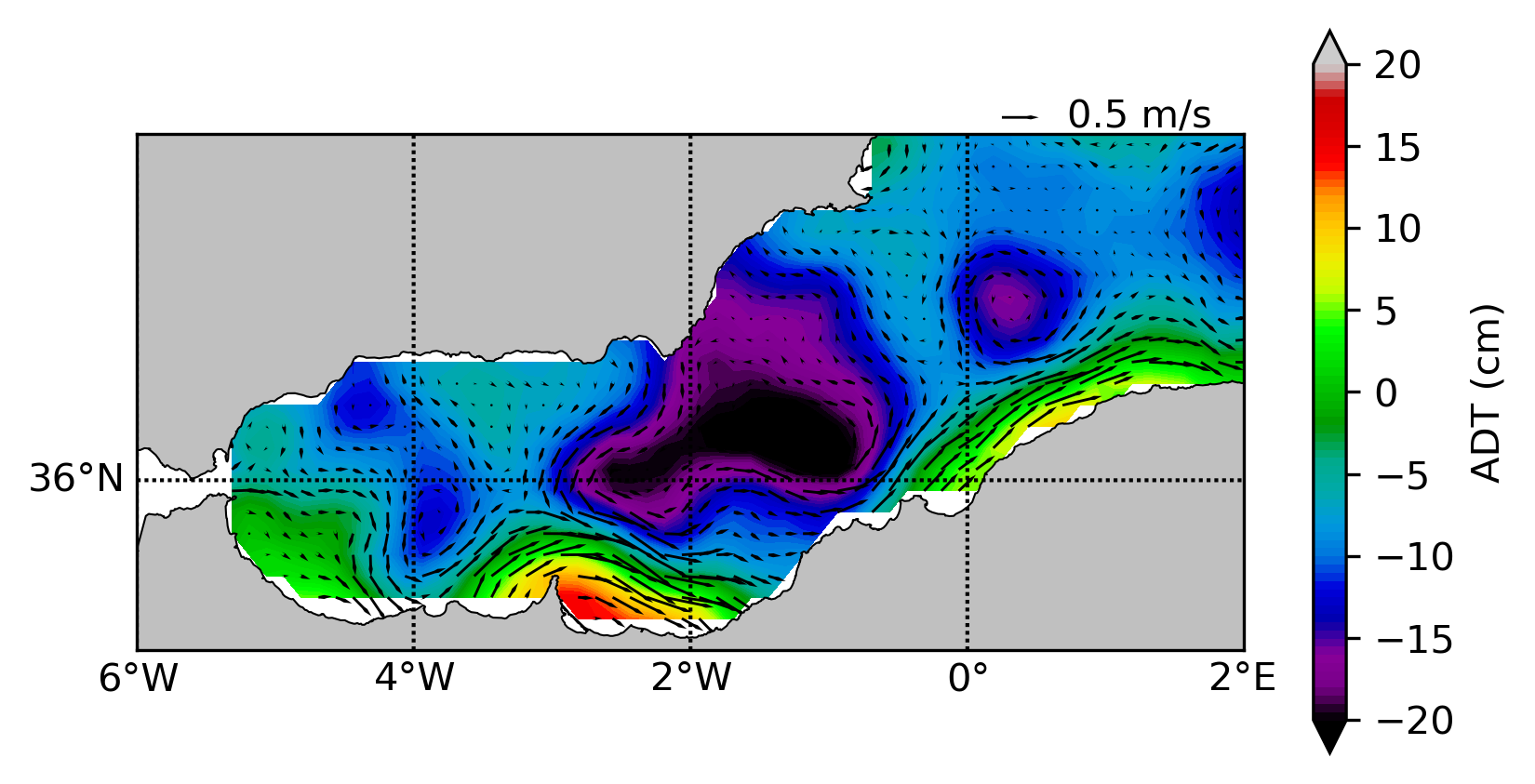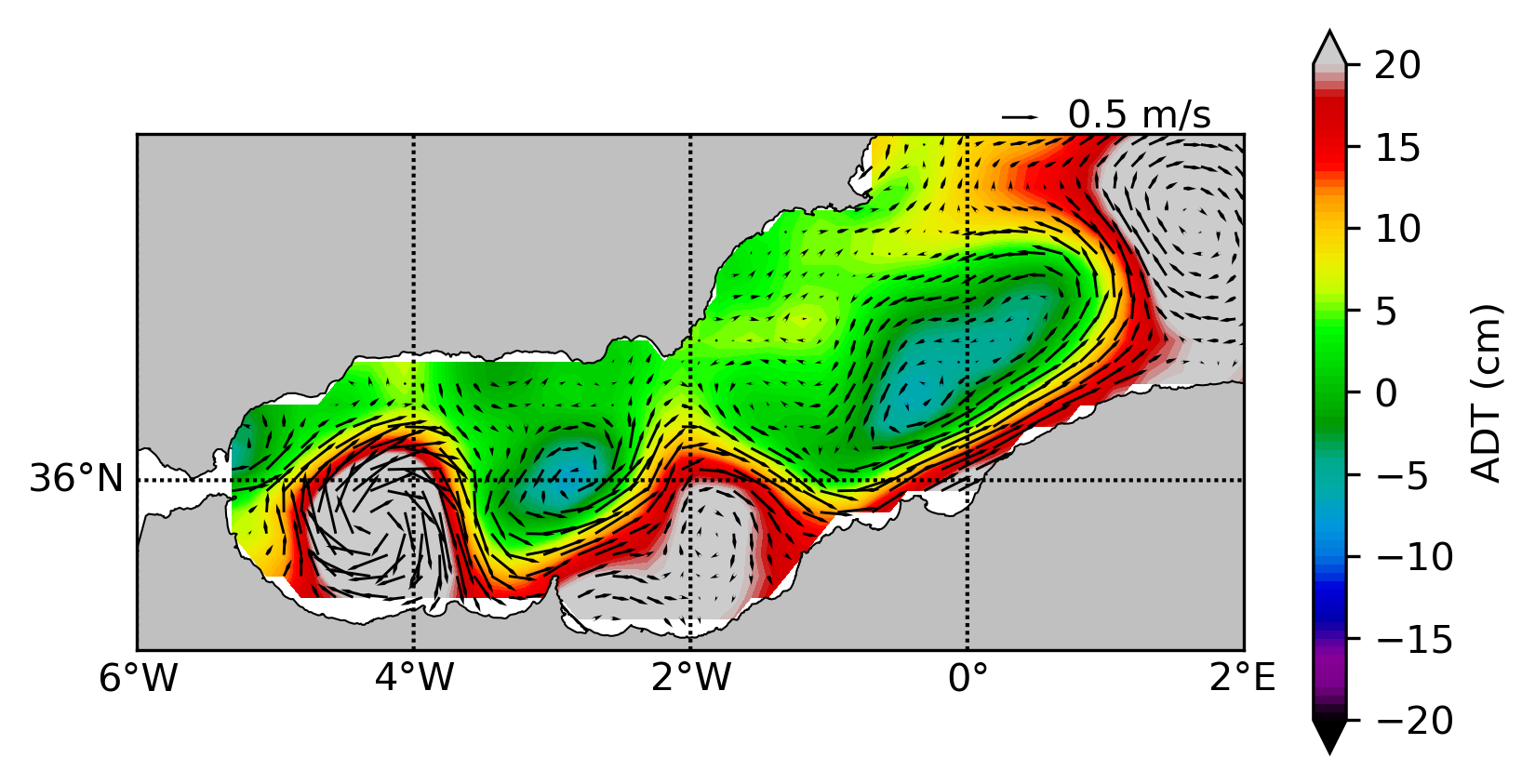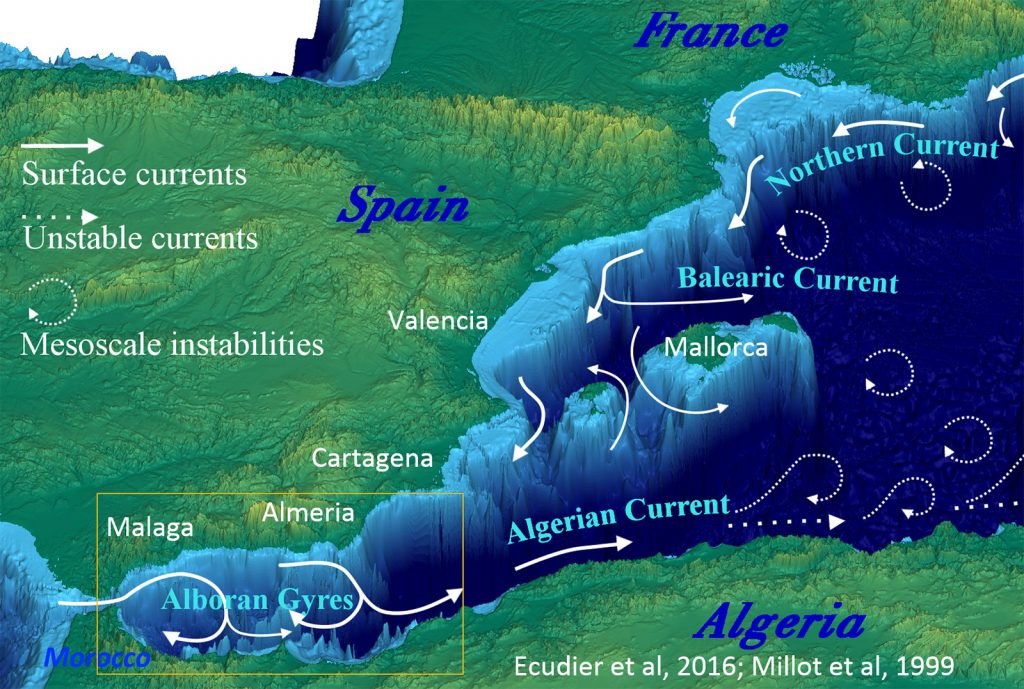Background
Tracing the three-dimensional pathways of water parcels and particles in the upper ocean is of importance from many perspectives. It provides insight into where, and by what path, surface properties, gases, contaminants and trace substances entering the surface ocean will end up. Since the surface ocean communicates with the atmosphere, receives sunlight, and supports photosynthesis, it is where properties are most rapidly altered. The region beneath the mixed layer exhibits large vertical gradients in density and in other properties, constraining the transport to be mostly along-isopycnal surfaces. The mechanisms by which surface properties are exchanged with the stratified pycnocline, and the rates of exchange, affect the interaction of the atmosphere and ocean and the ventilation of the deeper water.
Tracing the three-dimensional pathways of water parcels and particles in the upper ocean is of importance from many perspectives. It provides insight into where, and by what path, neutrally or negatively buoyant particles, surface properties, gases, contaminants and trace substances entering the surface ocean will end up. Since the surface ocean communicates with the atmosphere, receives sunlight, and supports photosynthesis, it is where properties are most rapidly altered. The region beneath the mixed layer exhibits large vertical gradients in density and in other properties, constraining the transport to be mostly along-isopycnal surfaces. The mechanisms by which surface properties are exchanged with the stratified pycnocline, and the rates of exchange, affect the interaction of the atmosphere and ocean and the ventilation of the deeper water.
Due to the time evolving nature of the flow, a Lagrangian approach is needed to trace the pathways of water. Dynamical systems-based approaches to Lagrangian analysis of the upper ocean have led to the identification of coherent transport structures, in contrast to regions of Lagrangian chaos, in which trajectories are less predictable. ONR programs such as the Predictability DRI of the late 1990s examined time-dependent, 2D flow fields and recognized the importance of stable/ unstable manifolds, and distinguished material contours fundamental to the generation of chaos and loss of predictability. Recent field studies reveal, however, that the surface patterns of drifting trajectories can deviate significantly from classical two-dimensional dynamical system theory predictions. Over the past few years, programs such as OCEAN 3D+1 MURI have spawned a great deal of progress in the development of computational tools for exploration of three-dimensional coherent features. But, models used to investigate the complex transport features only graze the complexity characteristic of upper ocean fronts, Langmuir circulations, filaments, and other submesoscale features in the ocean. The pathways that link the surface with the interior remain to be explored and understood in terms of their mechanisms, coherence, and implications.
The proposed study aims to identify these surface-to-interior transport structures and pathways with advanced observing technologies that are now available to us synthesize observations using models, and understand the underlying dynamical mechanisms using modeling and analysis tools. This will lead to improvements in the predication of three-dimensional coherent pathways and our ability to exploit surface data for predicting the interior structure.
Objectives
Our objective is to improve understanding of what governs the three-dimensional pathways of water parcels and semi-Lagrangian objects in the surface ocean. Specifically, we will address five questions:
- How do surface mixed layer processes alter the Lagrangian transport structures, and the trajectories that can be discerned in data from altimetry and general circulation models?
- What is the character of three-dimensional fluid transport structures in the presence of strong vertical velocities, for example, at a front? What are the roles of horizontal vs. vertical velocity, and the horizontal and vertical gradients in the horizontal velocity?
- How are transport structures altered when the drifting parcels are positively or negatively buoyant, or when there is a body force present due to shape, inertia, swimming ability or exposure to wind?
- How does the predictability of particle trajectories vary in space and time? How does the presence of submesoscale features affect Lagrangian predictability based on models that only resolve larger scales?
- How does knowledge of trajectories in 3D help us to better grasp and parameterize scalar transport and mixing processes where strong vertical motion exists?



Study Area
The Alboran Sea in the Western Mediterranean has a strong semi-permanent front between the fresher Atlantic water that enters the Western Mediterranean at Gibraltar, and the more saline Mediterranean waters. It is populated by organized, time evolving features (jets, fronts, and gyres) that provide an ideal test bed for a dynamical systems-based Lagrangian analysis. Furthermore, the front with its strong lateral density gradient, becomes baroclinically unstable, generating frontogenesis, submesoscale dynamics, where vertical vorticity ~ O(f) , and strong vertical velocities that transport particles and tracers. This provides an ideal setting for improving our understanding of Lagrangian pathways and mechanisms through collaborative fieldwork and modeling with scientists in Spain (and in the future, also Algeria and Morocco).
International Collaboration
The study is strongly collaborative, between multiple institutions in the United States and the institutions of IMEDEA and SOCIB in Mallorca, Spain. Collaboration is also sought with Algeria and Morocco.

